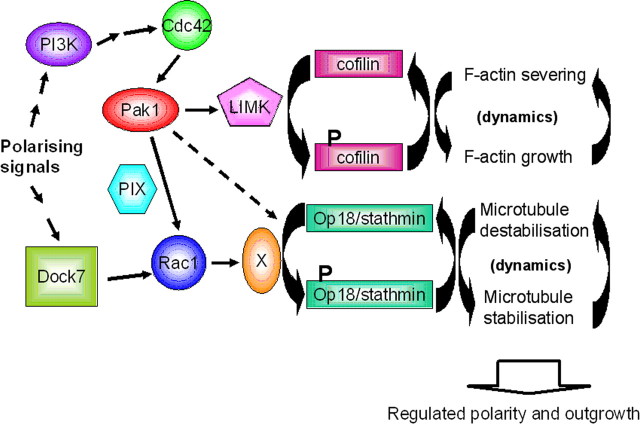Figure 10.
Model illustrating the role of Pak1 during neuronal polarization. Based on published literature, upstream signals that are most likely activators of Pak1 in polarizing neurons include PI3K. PI3K can activate Cdc42 via other GTPases, including Rap1b, all of which have been shown to affect axonal formation (Arimura and Kaibuchi, 2007). Cdc42 is an established direct activator of Pak1, which activates LIMK-1 and thus inhibits cofilin (Bokoch, 2003). Pak1 can also regulate Rac1 activation and directly inhibit the microtubule-severing protein Op18/stathmin (Obermeier et al., 1998; Wittmann et al., 2003; ten Klooster et al., 2006). It remains a question whether Pak1 affects microtubule organization in polarizing neurons by altering the function of Op18/stathmin directly (depicted by dotted arrow) or via Rac1 and its currently unidentified downstream targets. The correct specification of an axon and subsequent outgrowth of axons and dendrites require regulated and dynamic turnover of F-actin and microtubules, which are facilitated at least in part by Pak1 and its downstream targets.

